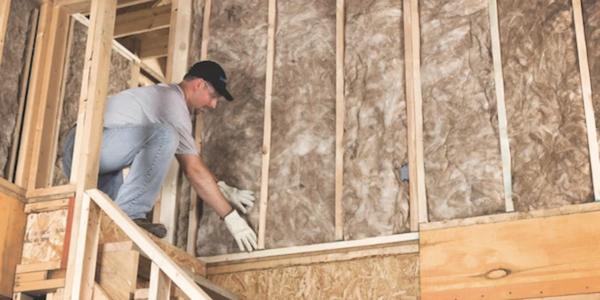After a challenging year for builders and their insulation contractors trying to manage skilled labor, smaller crews and pandemic-driven starts and stops, the post-pandemic environment combines unusually high demand with a growing list of challenges. Continued labor issues, the longer housing cycle, inflation and rising interest rates—are all requiring builders to do more with fewer resources, using materials and practices that deliver job efficiencies and faster turnarounds.
Driven by more stringent energy codes and the desire to manage overall costs, high-performance fiberglass insulation has already been a favorite among insulation contractors for single-family homes. Within this group, Home Innovation’s 2019 Annual Builder Practices Survey found that fiberglass insulation was according to the study “solidly the most popular insulation material in new homes,” with fiberglass batt comprising about 52 percent of the marketplace.
In fact, the Global Fiberglass Insulation report conducted in 2019 by The Freedonia Group, a division of MarketResearch.com, found that the demand for insulation in the US was “expected to increase 4.3% annually through 2023 to $12.1 billion. Fiberglass will continue to account for the largest share of insulation demand by volume because of its high R-values, relative ease of installation, and low cost relative to foamed plastic insulation.”
Since it was invented in 1938, fiberglass insulation has grown from a product commonly used to reduce utility costs and improve comfort to the preferred choice of builders seeking safe, proven, cost-effective and more sustainable products. For example, builders and insulation contractors who routinely choose fiberglass over spray foam point to the speed and simplicity of installation without the need for onsite mixing of harsh chemicals or evacuation of workers, which is particularly appealing in today’s time-constrained environment.

Jobsite timelines also benefit from fiberglass insulation offering better recovery and stiffness to completely fill stud cavities. Since any issues with the insulation can slow down the entire job, builders also know that a clean, precise-looking install is a big help when it comes to inspection time.
Builders can also feel confident knowing that fiberglass insulation is made with safe, proven ingredients that provide peace of mind for the homeowner looking for safer and more sustainable products behind the wall. And, because of its high performance and low installed cost, fiberglass insulation can help homebuyers stretch their dollar to help stay on budget or afford upgrades elsewhere.
Builders and their insulation contractors will notice a difference in some fiberglass products this year, as advancements in fiber technology have enabled what’s being called the next generation of fiberglass insulation. In early product trials, contractors confirmed that the superior texture, recovery and other characteristics make the new products easier and faster to work with—helping to enable top quality results in less time.
An additional benefit of these emerging advancements in fiberglass manufacturing is the ability to reduce waste and ultimately cut costs. “Every penny counts on any job,” explained Dean Moody of Intermountain West Insulation (IWI), Spokane, Washington. “Installers will also often toss the bad pieces they can’t use. With this new fiberglass, there’s likely to be less unusable pieces, which means more cost savings on every application and far less waste to dispose of.”
With advanced fiber technology and a history of proven performance, the next generation of fiberglass insulation is the logical choice for builders looking to meet today’s challenges with speed, quality, safety and cost-effectiveness.
Learn more at PINKNextGen.com.









